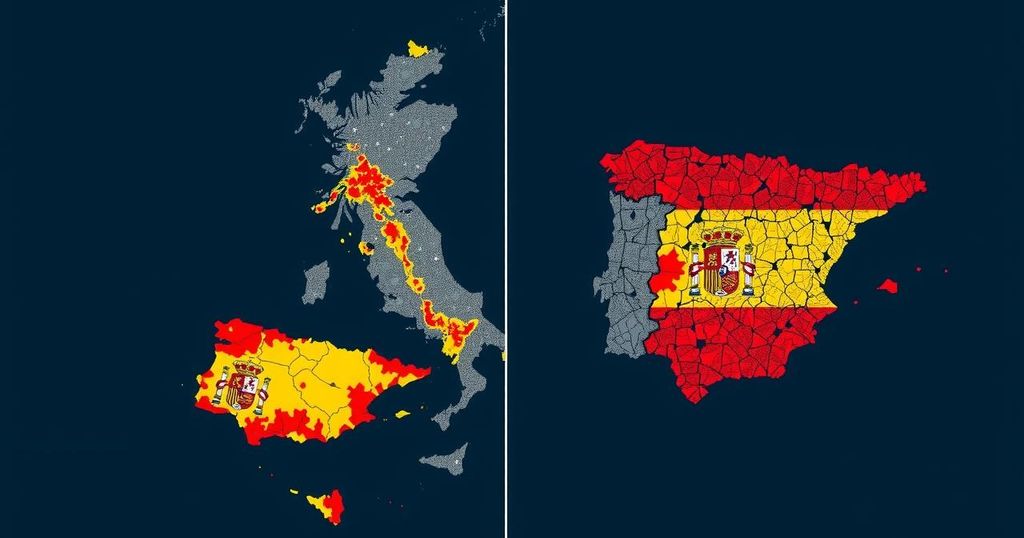World news
AFRICA, ASIA, EARTHQUAKES, EMERGENCY RESPONSE, EUROPE, GIBRALTAR, HUELVA, INSTITUTO SUPERIOR TECNICO, IST, LO, LOPES, MARIO LOPES, MOROCCO, NATURAL DISASTER, NATURAL DISASTERS, OLIVE PRESS NEWS SPAIN, PHILIPPINES, PORTUGAL, PORTUGUESE GOVERNMENT, SANTA MARIA, SHALLOW EARTHQUAKE, SPAIN
Michael Grant
0 Comments
Urgent Call for Earthquake Preparedness in Portugal and Spain
Experts have alerted authorities in Portugal and Spain regarding the imminent risk of a catastrophic earthquake similar to the 1755 event that resulted in 60,000 fatalities. They are advocating for structural reinforcements, particularly in schools and hospitals, to safeguard against seismic threats. Approximately 600,000 individuals in Greater Lisbon reside in buildings that lack sufficient earthquake preparedness, necessitating urgent governmental action.
Authorities on the Iberian Peninsula have been alerted to the urgent need for preparedness against a potentially catastrophic earthquake, akin to the Great Lisbon Earthquake of 1755. Experts caution that the seismic risk remains high, especially in light of inadequate building infrastructure. Renowned professionals, including Mario Lopes from the Instituto Superior Técnico and an expert in Seismic Engineering at Imperial College London, are advocating for immediate government action to reinforce buildings, especially those serving children and vulnerable populations. A recent study highlighted that approximately 600,000 residents in Greater Lisbon inhabit structures that are ill-equipped to withstand significant seismic activity. Alarmingly, numerous nurseries and kindergartens are situated within outdated residential buildings that would face detrimental consequences during a seismic event. Professor Lopes emphasized the necessity for a national initiative to upgrade the safety of educational facilities against potential earthquake fallout. Furthermore, many public hospitals, including São Jose and Santa Maria in Lisbon, are considered highly vulnerable to violent earthquakes, which may result in grave consequences for public health in the aftermath of such disasters. The historical context reveals that the earthquake of 1755, estimated to reach a magnitude of between 8.5 and 9 on the Richter scale, claimed around 60,000 lives across Portugal, Spain, and Morocco, resulting in a tremendous tsunami that devastated coastal cities. The geological underpinning of this disaster lies within the unique subduction zone beneath the Straits of Gibraltar, which harbors the potential to trigger powerful earthquakes. It remains incumbent upon contemporary authorities to implement robust structural reinforcements to mitigate future seismic risks and protect the populace.
The Great Lisbon Earthquake of 1755 is one of Europe’s deadliest seismic events, resulting in extensive loss of life and widespread destruction. Scientists believe that the region remains at risk due to geological vulnerabilities, particularly the subduction zone underneath the Gulf of Cadiz and Gibraltar. In recent years, seismic activity has rekindled concerns regarding public safety in the Iberian Peninsula, specifically in Portugal where many buildings are inadequately fortified against earthquake forces. Experts are now advocating for urgent reinforcement of sensitive structures, particularly schools and hospitals, to enhance their resilience and safeguard the community from potential disasters.
In conclusion, experts are sounding alarms about the seismic vulnerabilities of Portugal and Spain, particularly in light of unprepared infrastructure in the aftermath of the historical Great Lisbon Earthquake. The call for action emphasizes the importance of reinforcing buildings housing vulnerable populations such as children and patients. With a pressing need for national programs to enhance safety and a commitment to disaster preparedness, there lies an opportunity to significantly reduce potential casualties and damage in the event of a future earthquake.
Original Source: www.theolivepress.es




Post Comment